The Waiting
Hollow
[הפקרות
פרק א׳]
Trio, 2025
Three dancers linger in a space suspended between presence and absence, caught in the tension of anticipation.
Wearing traces of past choreographies, their bodies navigate a landscape of half-remembered rules: gestures that once held meaning, now empty, absurd, or maybe sacred.
In a cruel poetics of waiting — of what could have been, of what never arrives, the work meditates on what it means to be left behind, to be jeperdized, and to keep holding onto a world that keeps slipping away.
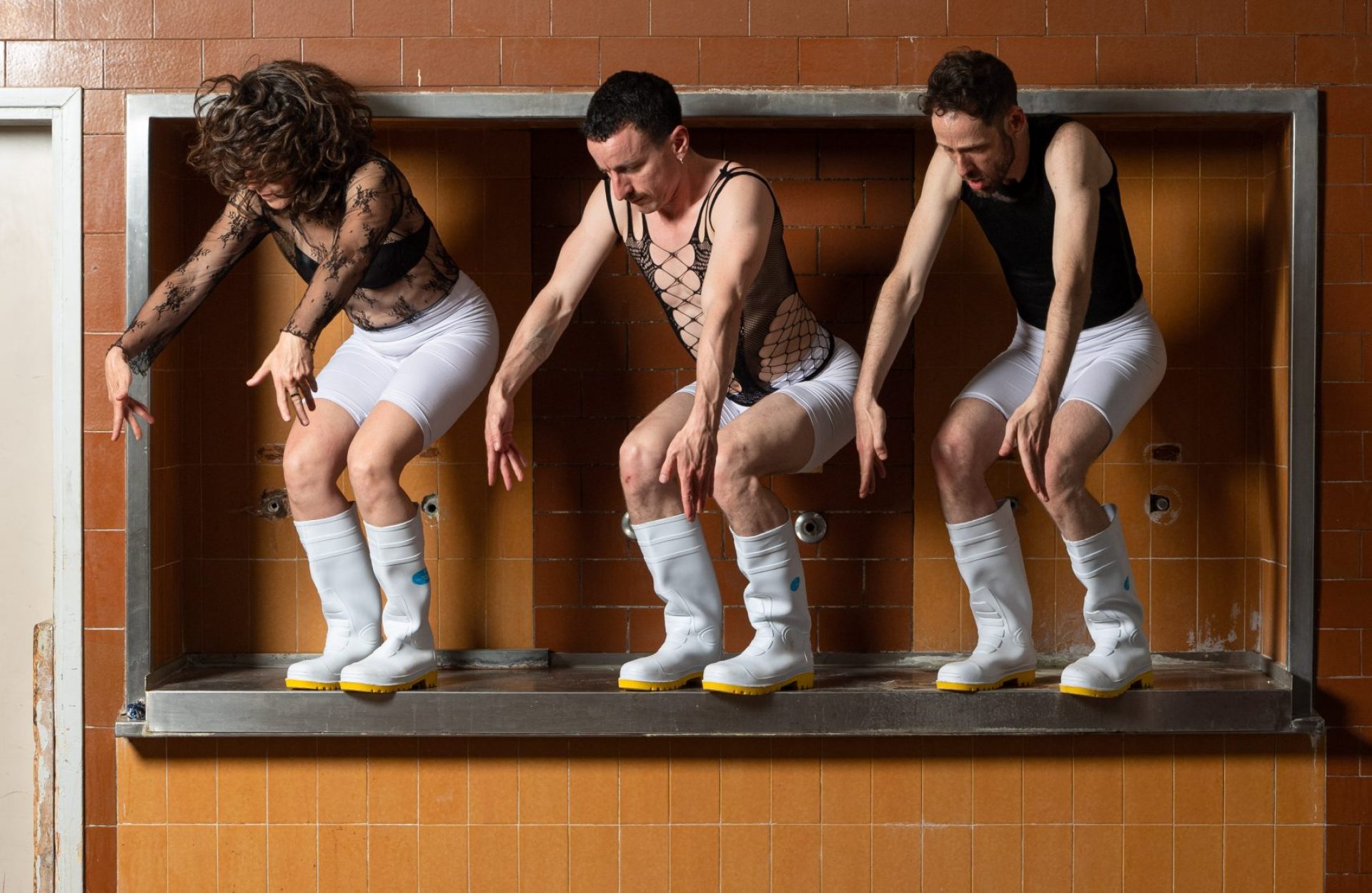
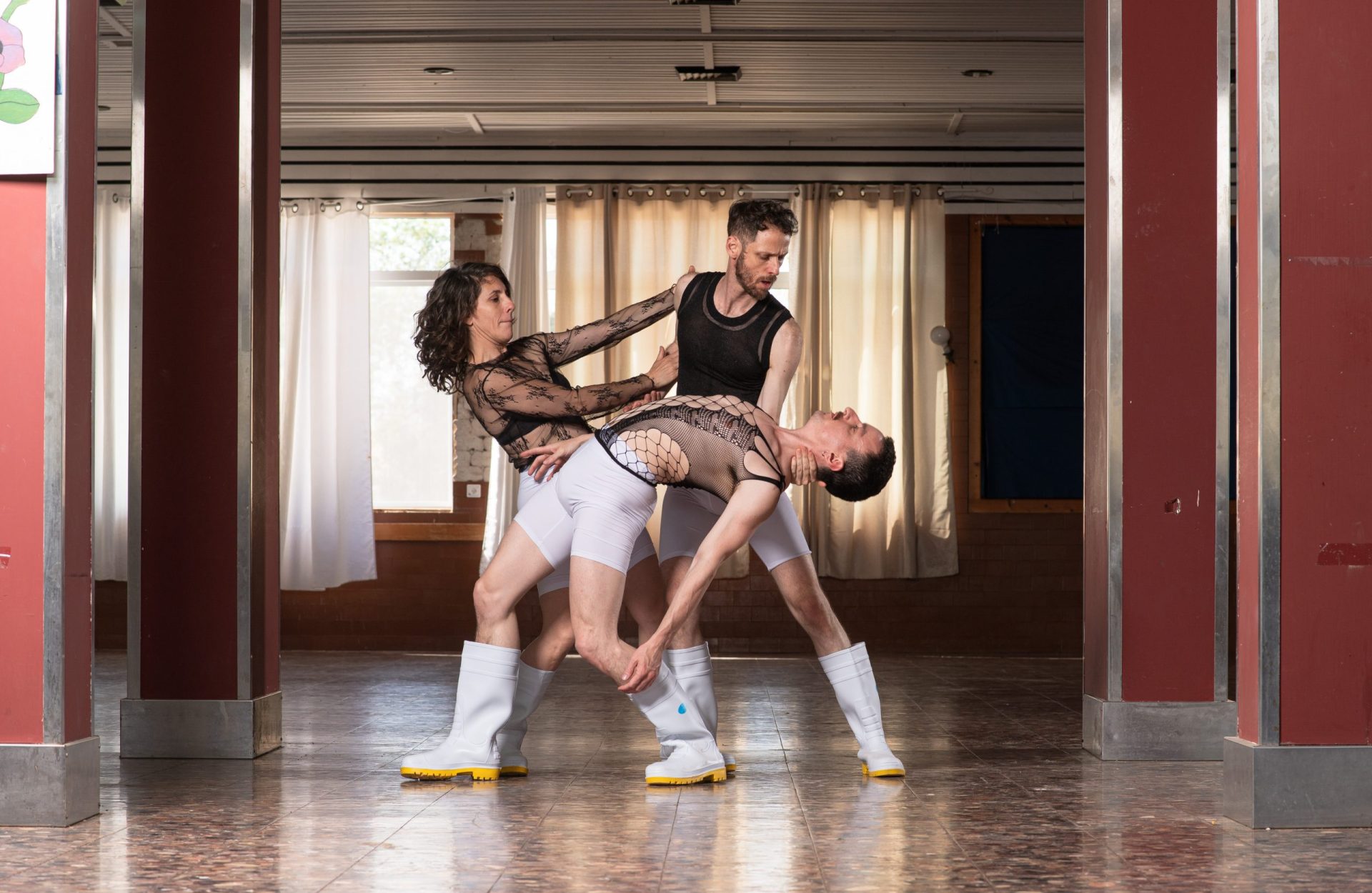
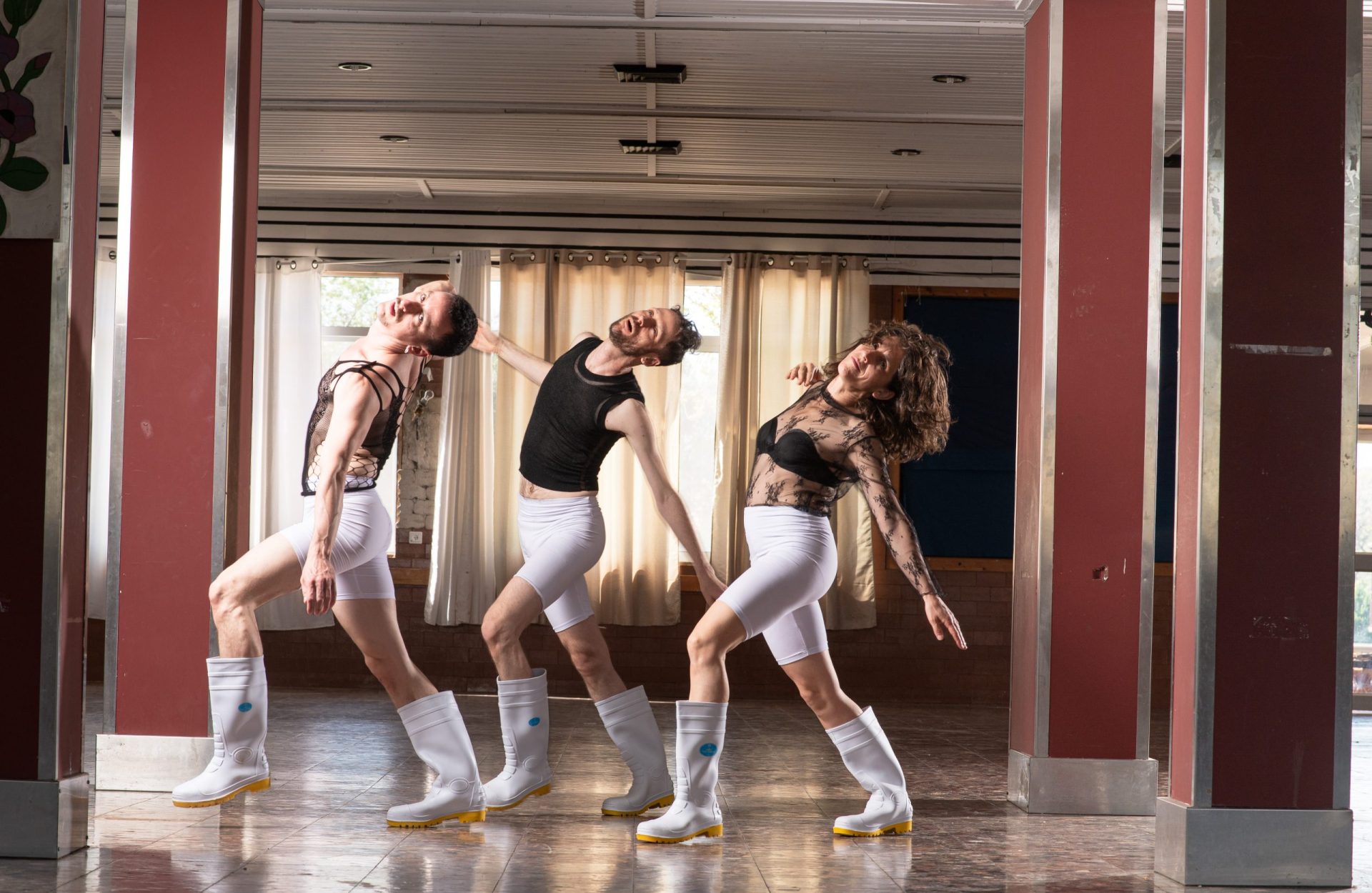
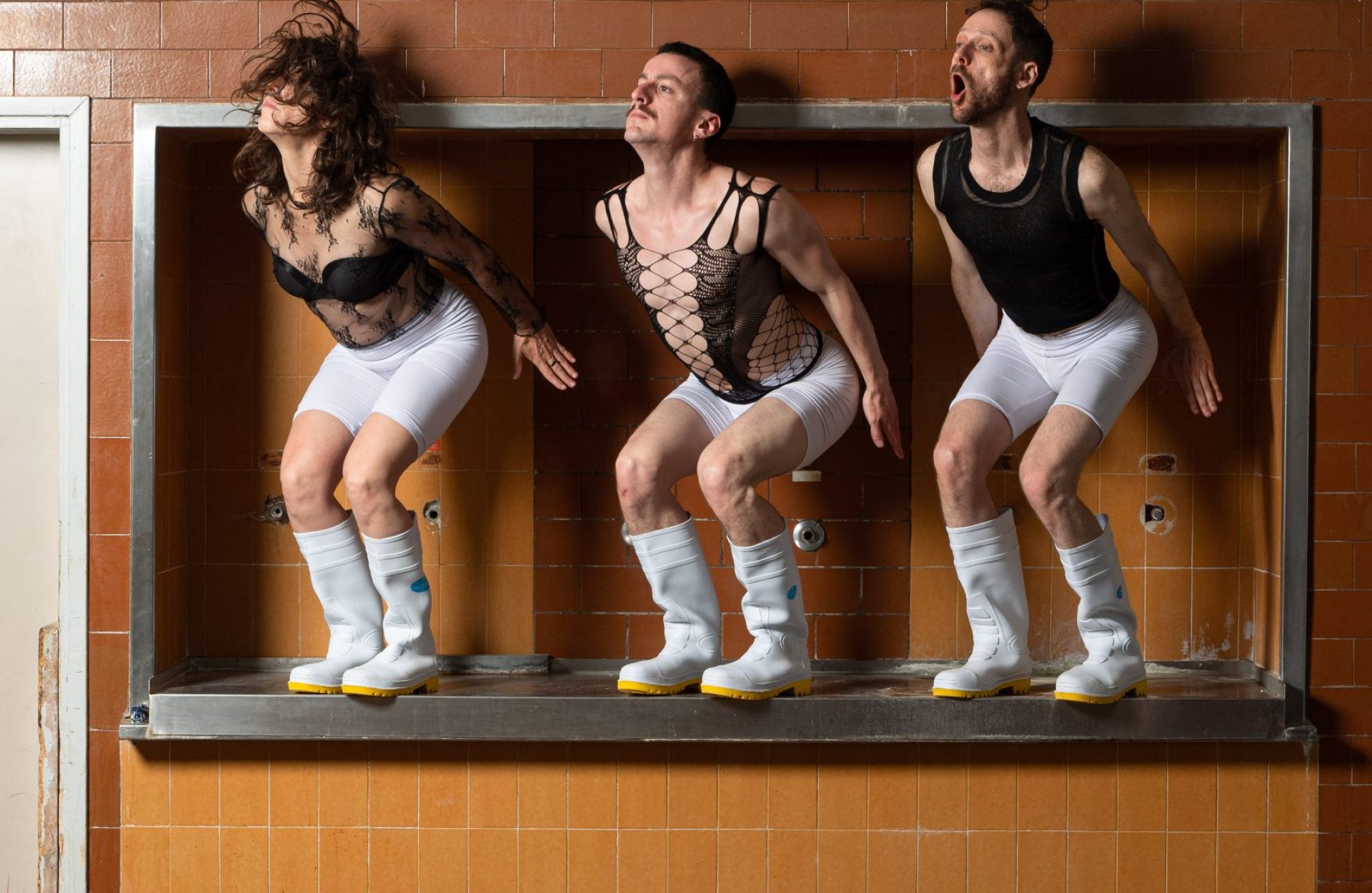
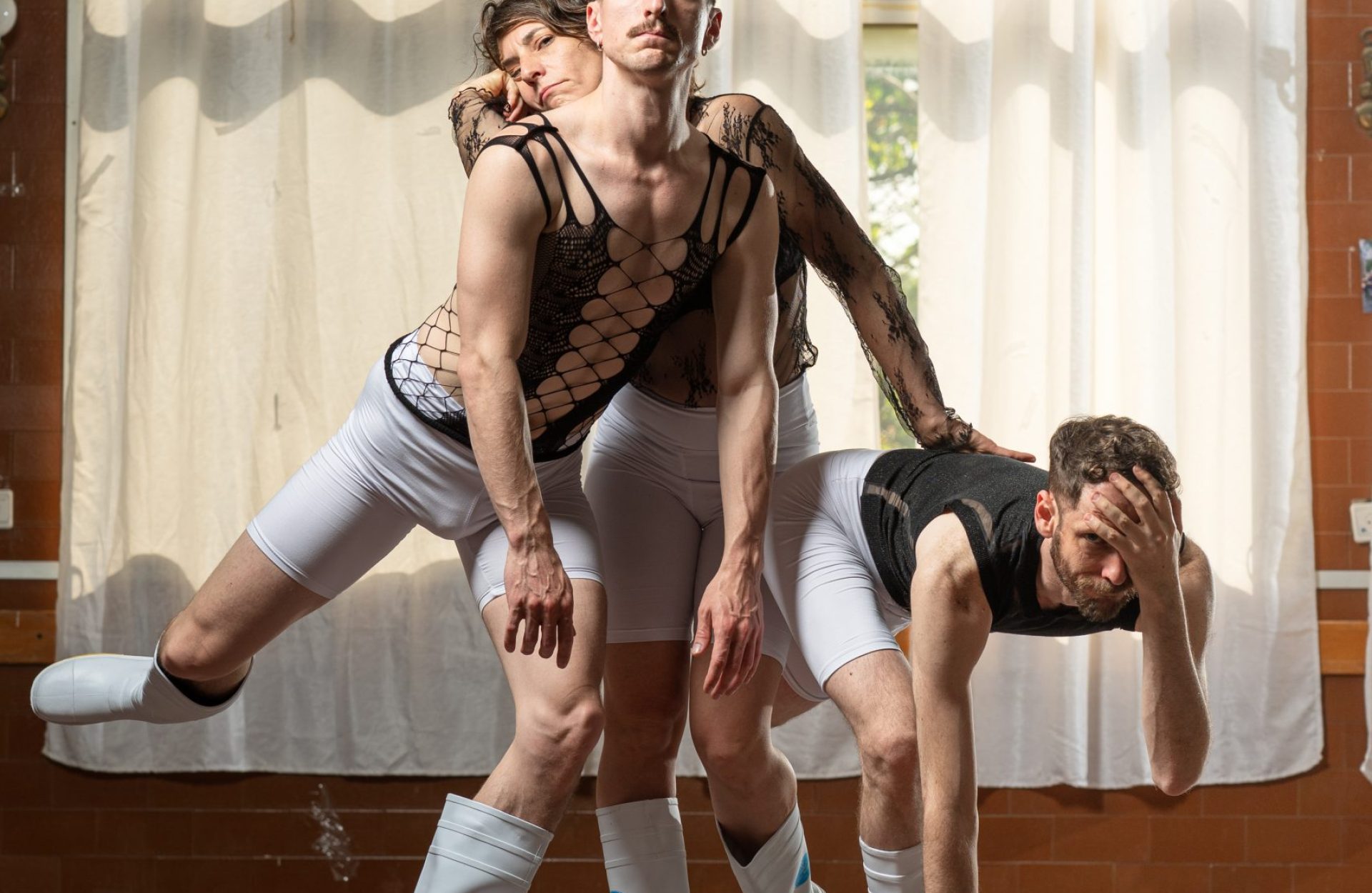
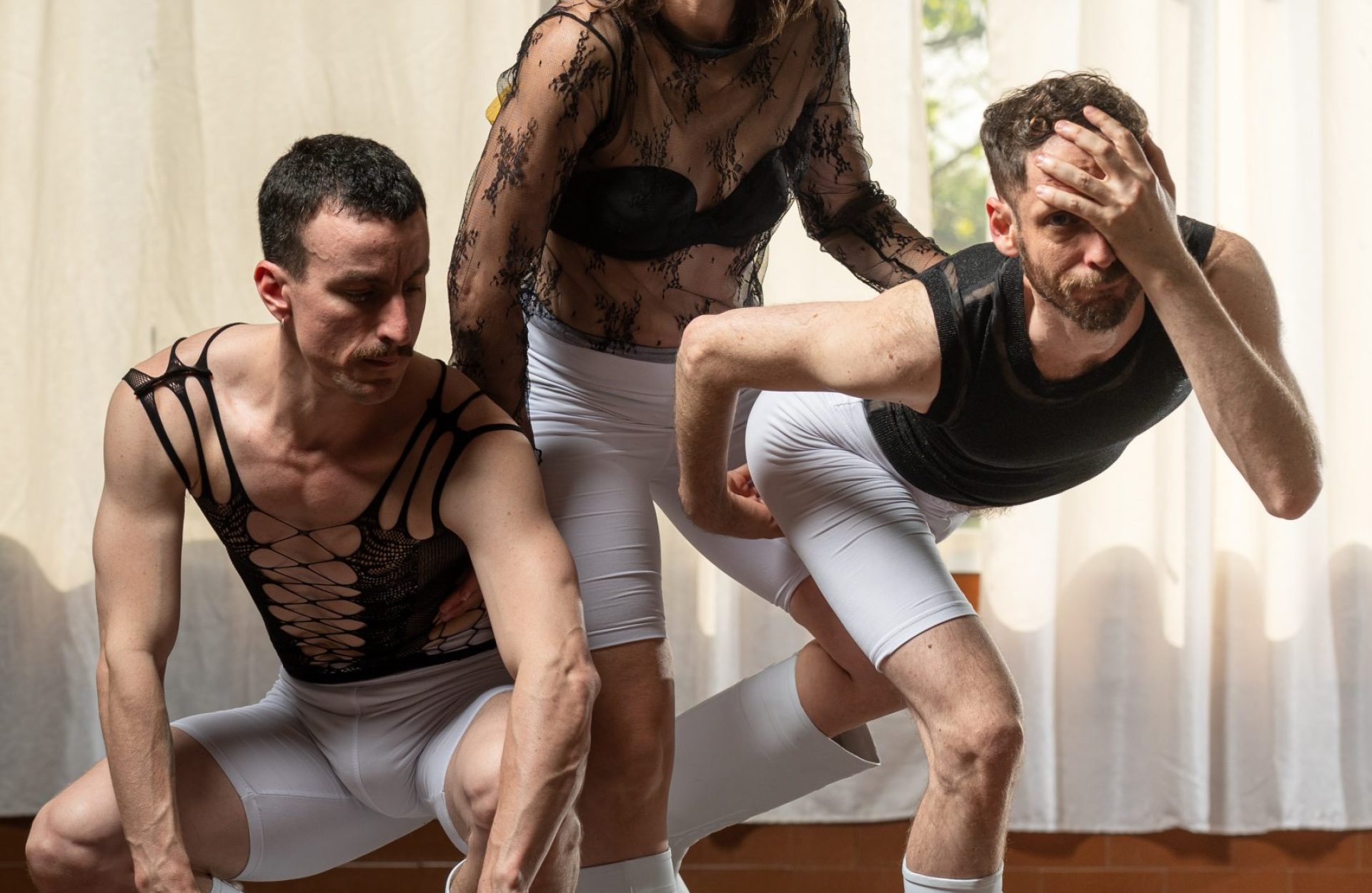
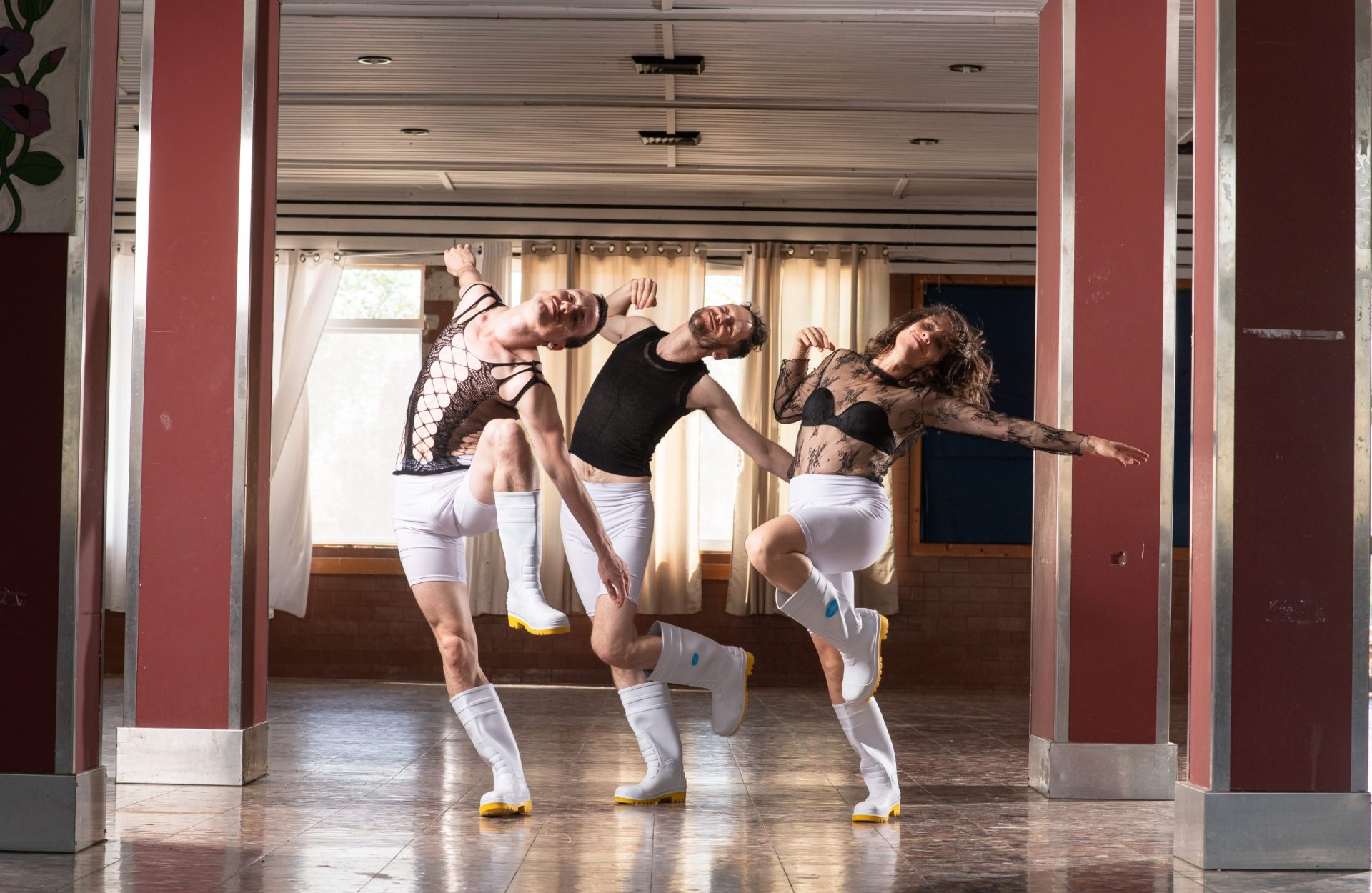


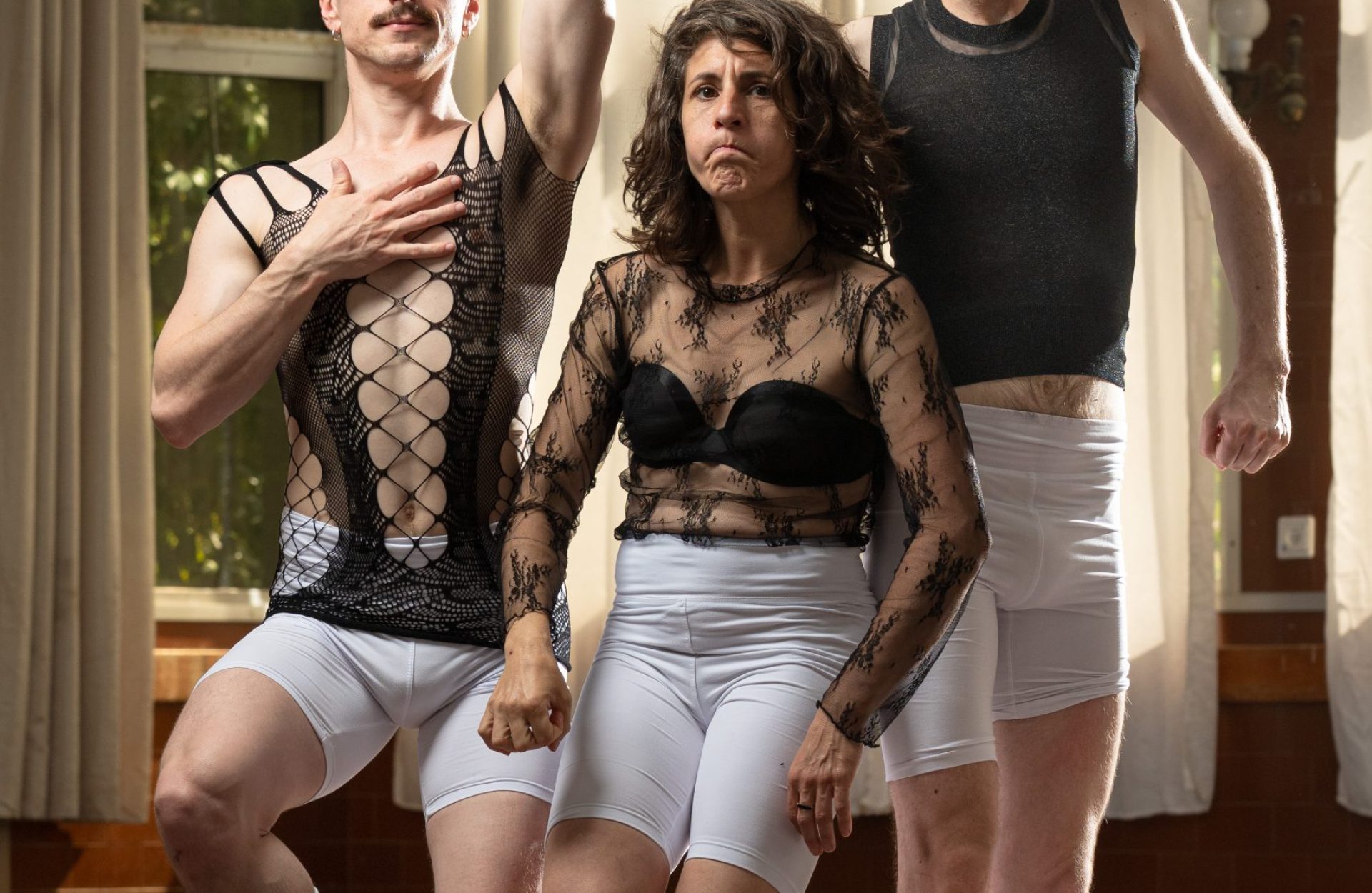
Choreography
Uri Shafir
Performing Artists
Anat Vaadia, Michael Yalon, Uri Shafir
Music
Uri Shafir, Eden Cohen, The Bee Gees
Costume Design
Eran Shanny
Light Design
Amir Castro
Dramaturgy / External Eyes
Nir Vidan, Nir Shauloff,Yael Venezia, Melanie Berson, Ofir Yannay
Premiered Curtain Up Project 2025
Photos
Yair Meyuhas
Video
Yair Meyuhas (video), Yoav Brill (editing)
The work was produced with the
support of Mifal Hapais,
the assistance of the Yehoshua
Rabinovich Tel Aviv Foundation for the Arts,
and an artist-in-residency program of Yasmeen Godder Company.
“The Waiting Hollow carries a strange eroticism, offering a delayed pleasure, a rediscovery of the body and its mysteries. Anat Vaadia, Michael Yalon, and Shafir himself make remarkable use of their bodies — improperly, as if they were malfunctioning mechanical dolls. They grope, explore, as if discovering movement for the first time. With odd expressions, slack jaws, pursed lips, their arms extend forward, brushing against another body almost by chance before continuing on.
It seems Shafir returns to the body itself — abandoned, unassigned, before any role, purpose, or definition was imposed upon it. Yalon hops in place, Shafir toys with his hand, and Vaadia walks to the rhythm of the bass — none of the three fully commits to continuous movement, and the choreography insists on staying at the threshold. It remains unraveled, estranged, queer.
Those willing to remain at the threshold will find pleasure in strange and unexpected combinations — body to body, or a body discovering itself anew. Like the moment when Shafir shakes his head and pelvis, playful and enlivening, drawing the others into a fleeting unison before they part ways again. The choreography, like the music, stutters and lingers, in a kind of tantric insistence on sensory potential. One can almost feel the pleasure rising in the dancers’ skin as it brushes the air, in their swaying hips as they cross their legs and advance toward the audience with a flirtatiousness laced with dread. But the queerness of the piece is more than mere sexuality — it is a wholesale refusal to perform preassigned roles. And it invites the audience to sense, to recognize — and to take pleasure in it.”
Trailer